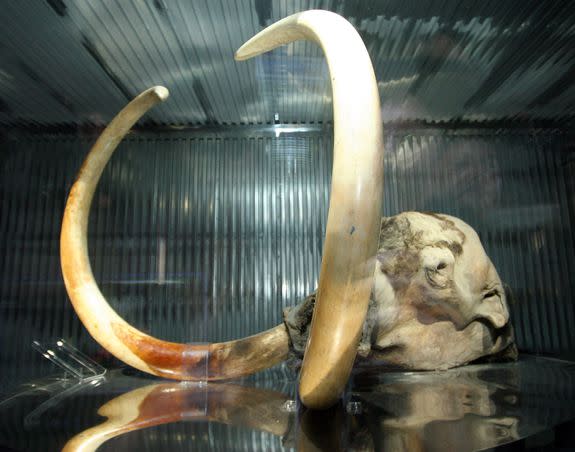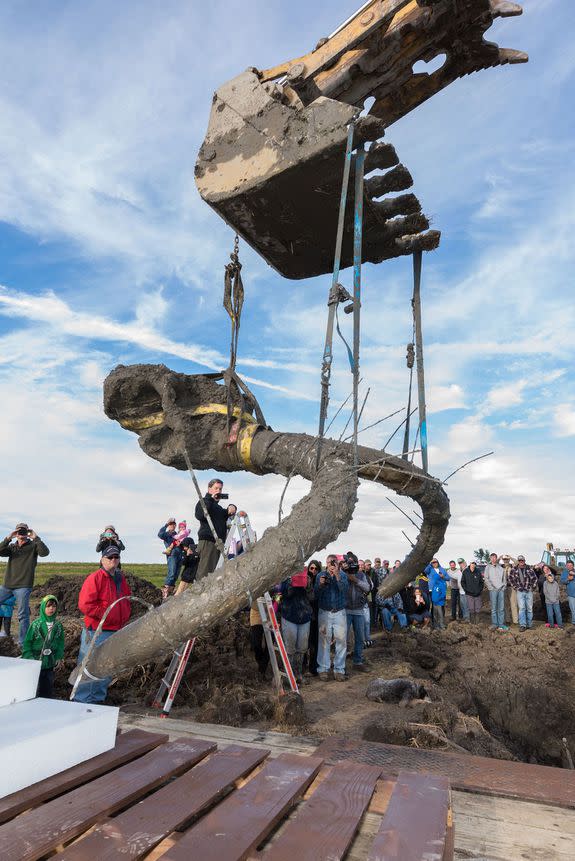Chill out, woolly mammoths aren't coming back just yet

Woolly mammoths won't be trouncing through the Arctic tundra anytime soon.
Contrary to recent headlines, which herald the extinct beast's coming resurrection, scientists are still a long way from figuring out how to revive the elephant ancestor.
SEE ALSO: Humans will drive polar bears to extinction without climate action, feds say
Woolly mammoths roamed the planet for hundreds of thousands of years before they vanished about 4,000 years ago. Paleontologists say the culprit for the die-off was possibly overhunting, or changes in mammoth's food supply after the last Ice Age.
A camp of scientists — known as "revivalists" — are dedicated to bringing mammoths back in the modern era for environmental and biological reasons. Some researchers have made important early progress, although nothing is close to leaving the lab.

Image: Koichi Kamoshida/Getty Images
At Harvard University, geneticists recently spliced mammoth DNA into an Asian elephant genome using Crispr, a powerful gene-editing tool. The team aims to gradually alter the DNA of modern elephants so they resemble a version of their ancient relatives.
George Church, a renowned Harvard geneticist leading the project, told the Guardian this week that the team is on the brink of creating a hybrid elephant-mammoth embryo.
The so-called "mammophant" would be mostly elephant but with a few key mammoth traits, such as a thick layer of subcutaneous fat, long shaggy hair and cold-adapted blood.
"We're not there yet, but it could happen in a couple of years," Church told the Guardian during a major science meeting in Boston. Even still, he noted that the team is many years from attempting to produce a living creature.
Another team has produced a kind of instruction manual for reconstructing mammoths in the lab.

Image: Daryl Marshke, Michigan Photography
Scientists compared the DNA recovered from two mammoth carcasses found in permafrost in the Yukon and Siberia. Then they sequenced the entire genome of the mammoth species, according to a 2015 study published in the journal Current Biology.
"This basically gives you the changes that account for a mammoth being a mammoth," Hendrik Poinar, who led the study and directs the Ancient DNA Center at McMaster University in Canada, told CBS News in 2015.
"This then gives us this road map, so to speak, of what we would need to change in an Asian elephant chromosome to make them mammoth-like," Poinar said.
As geneticists continue their quests in the lab, paleontologists are hunting remains in the wild.
In Michigan's frigid climes, scientists have recovered about 30 mammoths and 300 mastodons over the years, the University of Michigan says. More discoveries have been made in Siberia, where the permafrost keeps woolly mammoths well-preserved.
Every summer, scientists with South Korean firm Sooam Biotech hike to the extreme north of the Russian permafrost to find genetic material to clone.
The firm's founder, Hwang Woo-suk, previously took less conventional measures to secure his supply of mammoth tissue: he bought it from the Russian mafia, the former stem cell scientist admitted in 2006.
So why do people want to bring back mammoths?
Some think that giving mammoth traits to modern Asian elephants could help the endangered species adapt to environmental and human pressures.
However, if the revivalists succeed, ethical conundrums will ensue.
Some scientists say they worry that "mammophants" will become akin to objects in a freak show, instead of part of a healthy, integrated clans to which mammoths once belonged. Would they live in zoos, to the benefit of investors, or roam freely in the wild?
One thing is clear: scientists will have plenty of time to figure out the answers.
